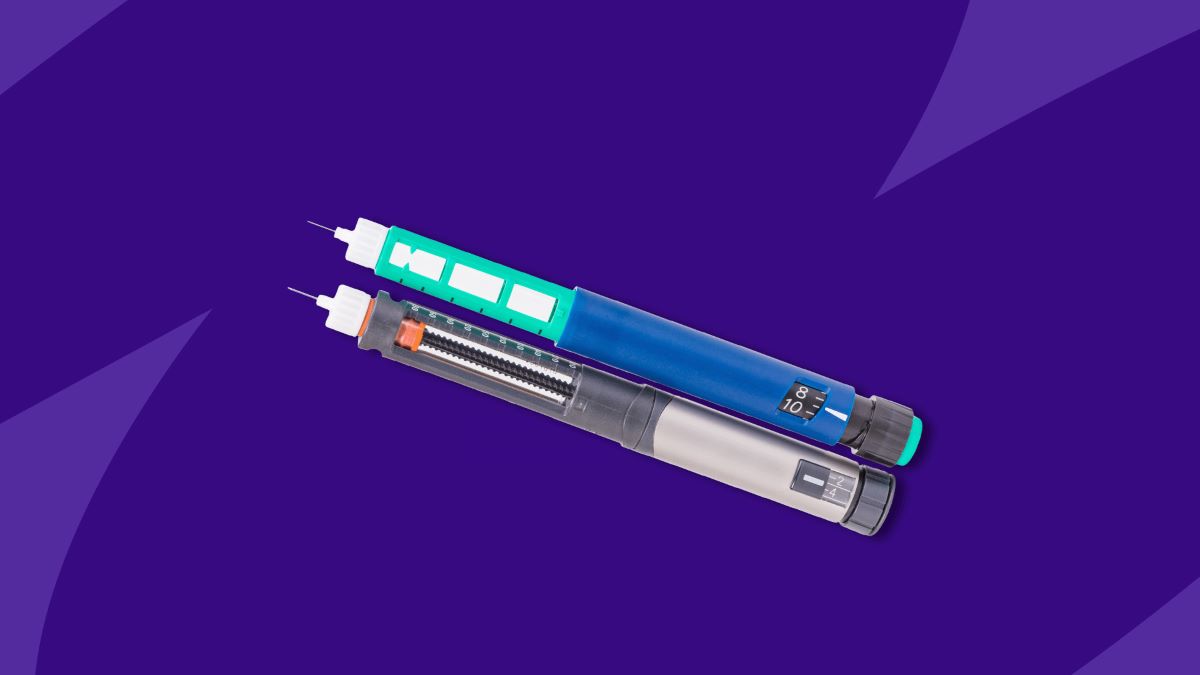Home>Finance>How To Get Diastasis Recti Covered By Insurance


Finance
How To Get Diastasis Recti Covered By Insurance
Published: November 13, 2023
Discover how to get diastasis recti covered by insurance with our finance tips and advice. Save money on your treatment today!
(Many of the links in this article redirect to a specific reviewed product. Your purchase of these products through affiliate links helps to generate commission for LiveWell, at no extra cost. Learn more)
Table of Contents
- Introduction
- Understanding Diastasis Recti
- The Importance of Insurance Coverage
- How to Determine Coverage Eligibility
- Gathering the Necessary Documentation
- Contacting Your Insurance Provider
- Appealing a Denied Claim
- Tips for Maximizing Insurance Coverage
- Alternative Options for Financial Assistance
- Conclusion
Introduction
Diastasis Recti is a condition that affects many individuals, particularly women who have gone through pregnancy. It occurs when the abdominal muscles separate, creating a gap in the midline of the stomach. This separation can lead to a variety of symptoms, such as a bulging belly, lower back pain, and weakened core strength.
While treatment for diastasis recti is essential for restoring function and alleviating discomfort, the cost of such treatment can often be a concern for many individuals. This is where insurance coverage plays a crucial role. Obtaining insurance coverage for diastasis recti treatment can help ease the financial burden and provide individuals with the support they need.
In this article, we will delve into the topic of obtaining insurance coverage for diastasis recti. We will discuss the importance of insurance coverage, how to determine eligibility for coverage, and the necessary steps to gather the required documentation. Additionally, we will provide tips for contacting your insurance provider and appealing a denied claim. We will also explore alternative options for financial assistance.
Understanding the process of obtaining insurance coverage for diastasis recti treatment is vital, as it can help individuals make informed decisions about their healthcare options. By knowing how to navigate the insurance system effectively, individuals can maximize their coverage and ensure they receive the necessary treatment without incurring excessive financial costs.
So, if you’re ready to learn more about how to get diastasis recti covered by insurance, let’s dive in and explore the steps you need to take to secure the coverage you deserve.
Understanding Diastasis Recti
Diastasis Recti is a common condition that occurs when the connective tissue between the rectus abdominis muscles (commonly known as the “six-pack” muscles) weakens, causing a separation of the abdominal muscles. While this condition can affect both men and women, it is more prevalent among women, especially those who have gone through pregnancy.
During pregnancy, the expanding uterus puts considerable pressure on the abdominal muscles. This prolonged stretching can lead to the separation of the connective tissue, resulting in diastasis recti. It is estimated that up to two-thirds of pregnant women experience this condition.
Symptoms of diastasis recti may include a visible bulge or “doming” in the stomach area, especially when performing exercises like crunches or planks. Other common symptoms include lower back pain, weak core muscles, and poor posture.
It is important to note that diastasis recti is not just a cosmetic issue but can also have functional implications. The separation of abdominal muscles can weaken the core and compromise pelvic stability, leading to other issues such as urinary incontinence and pelvic floor dysfunction.
While diastasis recti can sometimes resolve naturally within the first few months postpartum, for many individuals, it requires targeted exercise or even surgical intervention to restore the abdominal muscles’ strength and integrity.
Understanding the causes and symptoms of diastasis recti is crucial in seeking appropriate treatment and managing the condition effectively. If you suspect you may have diastasis recti, it’s advisable to consult with a healthcare professional or physical therapist who specializes in postpartum recovery to receive an accurate diagnosis and develop a personalized treatment plan.
The Importance of Insurance Coverage
Obtaining insurance coverage for diastasis recti treatment is essential for several reasons. Firstly, diastasis recti can significantly impact an individual’s quality of life, causing physical discomfort, functional limitations, and even psychological distress. Seeking treatment for this condition is not just about aesthetics but also about improving overall health and well-being.
Secondly, diastasis recti treatment can involve various interventions, such as physical therapy, exercise programs, specialized equipment, and in some cases, surgical procedures. These interventions can be costly, and many individuals may not have the financial means to cover these expenses out of pocket. Insurance coverage helps alleviate the financial burden, making treatment more accessible and affordable.
Furthermore, by having insurance coverage for diastasis recti, individuals can access a wide range of healthcare providers and treatment options. This ensures that they receive the most appropriate and effective care tailored to their specific needs. Insurance coverage provides individuals with the freedom to choose from a network of providers, including specialized physical therapists and surgeons who have expertise in diastasis recti treatment.
Insurance coverage also promotes preventive care and early intervention. By covering the costs of diastasis recti treatment, insurance providers encourage individuals to seek timely care and take steps to address the condition before it worsens. This can lead to better outcomes and long-term health benefits.
Lastly, insurance coverage for diastasis recti treatment helps reduce healthcare disparities. Access to affordable treatment options ensures that individuals from all socioeconomic backgrounds have equal opportunities to receive appropriate care. It prevents financial barriers from hindering someone’s ability to address their health concerns, promoting fairness and equality in healthcare.
Overall, insurance coverage is crucial for diastasis recti treatment as it improves access to care, reduces financial strain, and promotes overall well-being. It is important for individuals to understand their insurance benefits and take advantage of the coverage available to them.
How to Determine Coverage Eligibility
When it comes to determining insurance coverage eligibility for diastasis recti treatment, there are a few key factors to consider. These factors can vary depending on your insurance provider and the specific plan you have. Here are some steps you can take to determine your coverage eligibility:
- Review your insurance policy: Start by carefully reviewing your insurance policy documents, including the coverage terms and conditions. Look for any specific language regarding diastasis recti treatment or abdominal reconstruction procedures. Pay attention to any exclusions or limitations that may affect your coverage eligibility.
- Contact your insurance provider: Reach out to your insurance provider directly to inquire about your coverage for diastasis recti treatment. Ask specific questions about the procedures, treatments, and services that may be covered. Make sure to note any pre-authorization or medical necessity requirements that may need to be fulfilled.
- Consult with a healthcare professional: Seek guidance from a healthcare professional familiar with diastasis recti treatment. They can provide you with valuable insights and documentation to support your insurance claim. They may also be able to provide information on other patients who have successfully obtained coverage for diastasis recti treatment through similar insurance plans.
- Explore policy exceptions and appeal processes: If your insurance initially denies coverage for diastasis recti treatment, it is worth exploring any policy exceptions that may apply. Some insurance providers offer appeal processes that allow you to present additional evidence or arguments to support your case. Familiarize yourself with the appeals process and gather supporting documentation to strengthen your claim.
Remember, every insurance policy is unique, and coverage eligibility can vary. It is important to thoroughly understand your specific coverage and communicate directly with your insurance provider to determine your eligibility for diastasis recti treatment. By taking these steps, you can navigate the insurance system more effectively and increase your chances of obtaining the coverage you need.
Gathering the Necessary Documentation
When seeking insurance coverage for diastasis recti treatment, it is important to gather the necessary documentation to support your claim. Insurance providers often require specific proof of medical necessity and treatment efficacy. Here are some essential documents to gather:
- Medical records: Collect all relevant medical records, including your diagnosis of diastasis recti, treatment history, and any related consultations with healthcare professionals. These records serve as evidence of your condition and can help establish the medical necessity of the treatment.
- Physical therapy reports: If you have received physical therapy for diastasis recti, obtain copies of the therapy reports. These reports outline the specific exercises, techniques, and progress made during your therapy sessions, providing evidence of the treatment’s effectiveness and impact on your condition.
- Photographic evidence: Document your diastasis recti visually by taking clear, well-lit photographs of your abdomen from different angles. Be sure to capture any visible signs of separation, such as a bulging belly or a doming effect. These photographs can serve as visual proof of your condition and its impact on your physical appearance.
- Letters of medical necessity: Ask your healthcare provider to provide a letter detailing why diastasis recti treatment is medically necessary for you. This letter should explain how the condition affects your daily life, the potential health risks associated with untreated diastasis recti, and the expected benefits of the recommended treatment.
- Research and studies: Gather any relevant medical research articles, studies, or clinical guidelines that support the effectiveness of the specific treatments or interventions you are seeking. This information can help demonstrate the efficacy and medical necessity of the recommended treatment.
- Insurance claim forms: Make sure to fill out any required insurance claim forms accurately and completely. Include all relevant information, such as diagnosis codes, treatment codes, and the names of healthcare providers involved. Double-check the submission requirements of your insurance company to ensure you provide all necessary information.
By compiling these documents, you can present a comprehensive case to your insurance provider, providing the necessary evidence to support your claim for diastasis recti treatment. Remember to keep copies of all submitted documents for your records, and consider sending them via certified mail or using a delivery tracking method to ensure they reach the insurance company successfully.
Contacting Your Insurance Provider
Once you have gathered the necessary documentation, it’s time to contact your insurance provider to discuss your coverage for diastasis recti treatment. Here are some important steps to follow when reaching out to your insurance company:
- Obtain the contact information: Find the appropriate contact information for your insurance provider’s customer service department. This may include a phone number, email address, or online contact form. Note down any specific instructions or requirements for contacting them.
- Prepare your questions: Before making the call or writing an email, make a list of questions you want to ask regarding your coverage for diastasis recti treatment. Be prepared to provide specific details of the treatment you are seeking and the healthcare providers involved.
- Be clear and concise: When contacting your insurance provider, clearly explain your situation, your diagnosis of diastasis recti, and your need for treatment. Use the information you have gathered, such as the medical records and letters of medical necessity, to support your case.
- Ask for guidance: Seek guidance from the insurance representative regarding the specific requirements, limitations, or exceptions that may apply to your coverage. Ask for clarification on any terms or conditions that you are unsure about.
- Document the conversation: Take notes during your conversation or save a copy of any email correspondence with the insurance representative. Document the date, time, and the name of the person you spoke to. This documentation will be helpful in case you need to refer back to the details later.
- Follow up if necessary: If you do not receive a satisfactory response during your initial contact, don’t hesitate to follow up with your insurance provider. Ask for clarification or request to speak with a supervisor if needed. Persistence can sometimes help in resolving any issues or misunderstandings.
Remember to remain polite and professional during your interactions with the insurance company representatives. While the process may be frustrating at times, maintaining a calm and respectful demeanor can ensure better communication and a higher likelihood of a positive outcome.
By contacting your insurance provider and engaging in open communication, you can gain a clearer understanding of your coverage for diastasis recti treatment. This will help you make informed decisions about your healthcare options and navigate the insurance process more effectively.
Appealing a Denied Claim
If your insurance provider denies your claim for diastasis recti treatment, don’t lose hope. You have the right to appeal the decision and present additional evidence to support your case. Here are the steps to follow when appealing a denied claim:
- Review the denial letter: Carefully read the denial letter from your insurance provider. Look for the specific reason(s) cited for the denial and take note of any deadlines or instructions for appeal.
- Understand your policy: Familiarize yourself with your insurance policy and the coverage terms related to diastasis recti treatment. Ensure that the denial aligns with the stated policy provisions.
- Gather additional documentation: Assess the reasons provided for the denial and gather any additional documentation that could strengthen your case. This may include detailed medical records, expert opinions from healthcare professionals, or further research supporting the necessity of the treatment.
- Compose a strong appeal letter: Write a comprehensive appeal letter addressing the points raised in the denial letter. Clearly explain why you believe the denial was incorrect and provide supporting evidence to refute their reasoning. Include any new information or documentation that you have gathered.
- Follow the appeal process: Follow the specific appeal process outlined by your insurance provider. This may involve completing and submitting an appeal form or sending a written letter. Adhere to any deadlines specified by the insurance company.
- Keep records of all communication: Keep copies of all correspondence, including the appeal letter and any supporting documents. Record the date and time of any phone conversations and the name of the representative you speak with.
- Consider seeking professional help: If you are having difficulty navigating the appeal process, or if the denial is particularly complex, you may want to consult with a healthcare attorney or a patient advocacy group specializing in insurance appeals. They can provide guidance and support throughout the process.
- Be persistent and patient: Appeals can take time, so be prepared to wait for a response. Stay proactive by following up with your insurance provider to check on the status of your appeal. Maintain a calm and professional demeanor throughout the process.
Remember that the appeals process gives you an opportunity to present additional evidence and arguments to support your claim. By following the steps outlined above and advocating for yourself, there is a chance of overturning the denial and obtaining the coverage you need for diastasis recti treatment.
Tips for Maximizing Insurance Coverage
When it comes to maximizing insurance coverage for diastasis recti treatment, there are several tips and strategies that can help ensure you receive the most benefits from your insurance plan. Here are some key tips to consider:
- Review your insurance policy: Thoroughly understand the specific terms and conditions of your insurance policy, particularly those related to diastasis recti treatment. Familiarize yourself with any coverage limitations, exclusions, or required pre-authorization processes.
- Choose in-network providers: Select healthcare providers, such as physical therapists and surgeons, who are within your insurance network. In-network providers typically have agreed-upon rates with your insurance company, resulting in lower out-of-pocket costs for you.
- Get pre-authorization if required: Some insurance plans may require pre-authorization for certain treatments or procedures. Make sure to understand and fulfill any pre-authorization requirements to avoid claim denials later on.
- Document everything: Keep a record of all medical records, bills, receipts, and communications related to your diastasis recti treatment. This documentation will be essential when filing claims or appealing denials.
- Communicate with your healthcare providers: Talk openly with your healthcare providers about your insurance coverage and financial concerns. They can guide you on the most cost-effective treatment options and help navigate the insurance process.
- Advocate for medical necessity: Clearly communicate to your insurance provider why diastasis recti treatment is medically necessary for you. Provide detailed documentation, letters of medical necessity, and supporting research to support your case.
- Appeal claim denials: If your claim for diastasis recti treatment is denied, don’t hesitate to appeal. Follow the appeal process and provide any additional evidence or information that supports the medical necessity of the treatment.
- Research financial assistance options: Look into financial assistance programs or grants specifically aimed at supporting individuals seeking treatment for diastasis recti. These programs can help offset the financial burden of the treatment.
- Stay informed about changes to your policy: Keep yourself updated on any changes or updates to your insurance policy that may affect your coverage for diastasis recti treatment. Stay in touch with your insurance provider to clarify any doubts or concerns.
By following these tips, you can optimize your insurance coverage and minimize your out-of-pocket expenses for diastasis recti treatment. Remember to be proactive and persistent in exploring all available options to maximize the benefits provided by your insurance plan.
Alternative Options for Financial Assistance
If you are facing financial challenges in obtaining insurance coverage for diastasis recti treatment, there are alternative options available to explore for financial assistance. Here are some avenues to consider:
- Government assistance programs: Research government programs in your country or region that provide financial aid for medical treatments. These programs may offer subsidies or grants to individuals who meet specific eligibility criteria.
- Non-profit organizations: Look for non-profit organizations that focus on supporting individuals with diastasis recti or postpartum health. These organizations may offer financial assistance programs or provide resources that connect individuals with funding options.
- Medical research studies: Explore the possibility of participating in medical research studies related to diastasis recti treatment. Some studies may offer financial compensation or cover the costs of treatment in exchange for participation.
- Crowdfunding platforms: Consider creating a crowdfunding campaign to raise funds for your diastasis recti treatment. Share your story, explain your financial need, and reach out to friends, family, and the community for support.
- Flexible spending accounts (FSAs) or health savings accounts (HSAs): If you have an FSA or HSA through your employer, these accounts allow you to set aside pre-tax funds for medical expenses. Utilize these accounts to help offset the costs of diastasis recti treatment.
- Payment plans or financing options: Inquire with your healthcare providers if they offer payment plans or financing options to make the cost of treatment more manageable. This allows you to spread out the payments over time, easing the financial burden.
- Employer assistance programs: Check with your employer to see if they offer any employee assistance programs that provide financial aid for medical treatments. Some employers may provide resources or grants to help employees cover healthcare expenses.
Remember that financial assistance options may vary depending on your location and personal circumstances. Research local resources, speak with healthcare professionals, and reach out to patient advocacy organizations for guidance in finding alternative avenues for financial assistance.
While navigating the financial aspect of diastasis recti treatment can be challenging, exploring these alternative options can provide you with additional support and relief. No one should have to forgo necessary treatment due to financial limitations, so be proactive in seeking out assistance to make your diastasis recti journey more accessible and affordable.
Conclusion
Diastasis recti is a condition that can have a significant impact on individuals, both physically and emotionally. Seeking treatment for diastasis recti is essential for restoring abdominal strength, alleviating discomfort, and improving overall well-being. However, the cost of treatment can be a concern for many individuals.
Obtaining insurance coverage for diastasis recti treatment plays a crucial role in reducing the financial burden and ensuring that individuals have access to the care they need. By understanding the process of determining coverage eligibility, gathering the necessary documentation, and effectively communicating with your insurance provider, you can increase your chances of securing coverage for diastasis recti treatment.
In cases where insurance coverage is not available or is insufficient, exploring alternative options for financial assistance can provide additional support. Whether through government assistance programs, non-profit organizations, or crowdfunding, these avenues can help make treatment more accessible and affordable.
Maximizing insurance coverage for diastasis recti treatment involves taking proactive steps, such as reviewing your policy, choosing in-network providers, and advocating for medical necessity. Additionally, in the event of a claim denial, appealing the decision can offer a chance to present additional evidence and arguments to support your case.
Remember, the journey to obtaining insurance coverage or financial assistance for diastasis recti treatment may require persistence and research. But with determination and advocacy, individuals can overcome financial barriers and access the necessary care to improve their health and quality of life.
Ultimately, diastasis recti treatment should not be hindered by financial constraints. By being proactive, resourceful, and resilient, individuals can navigate the insurance landscape and explore alternative options to secure the coverage and financial assistance needed to embark on their path towards healing and recovery.














